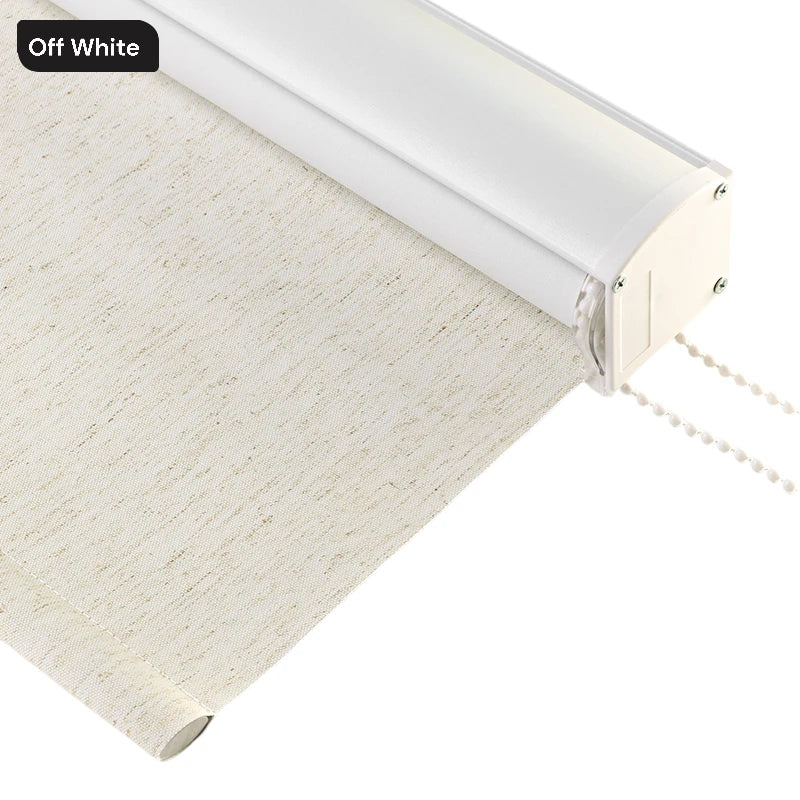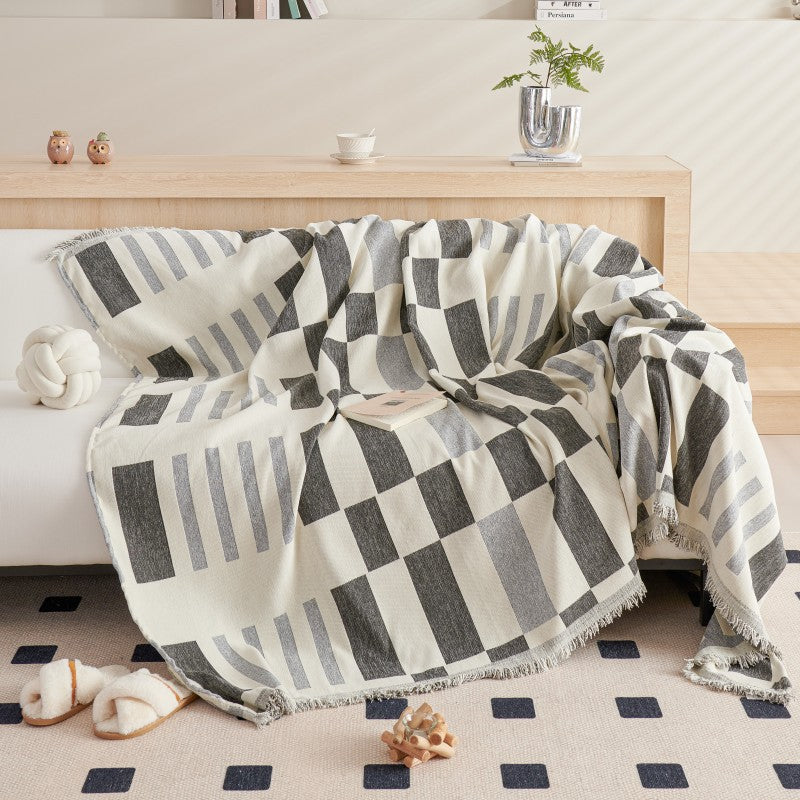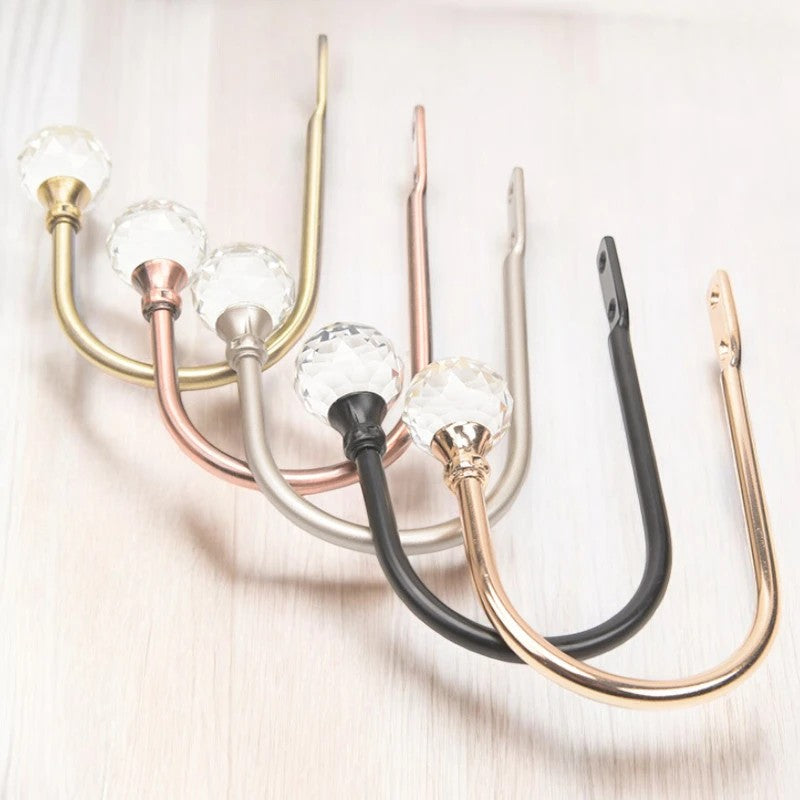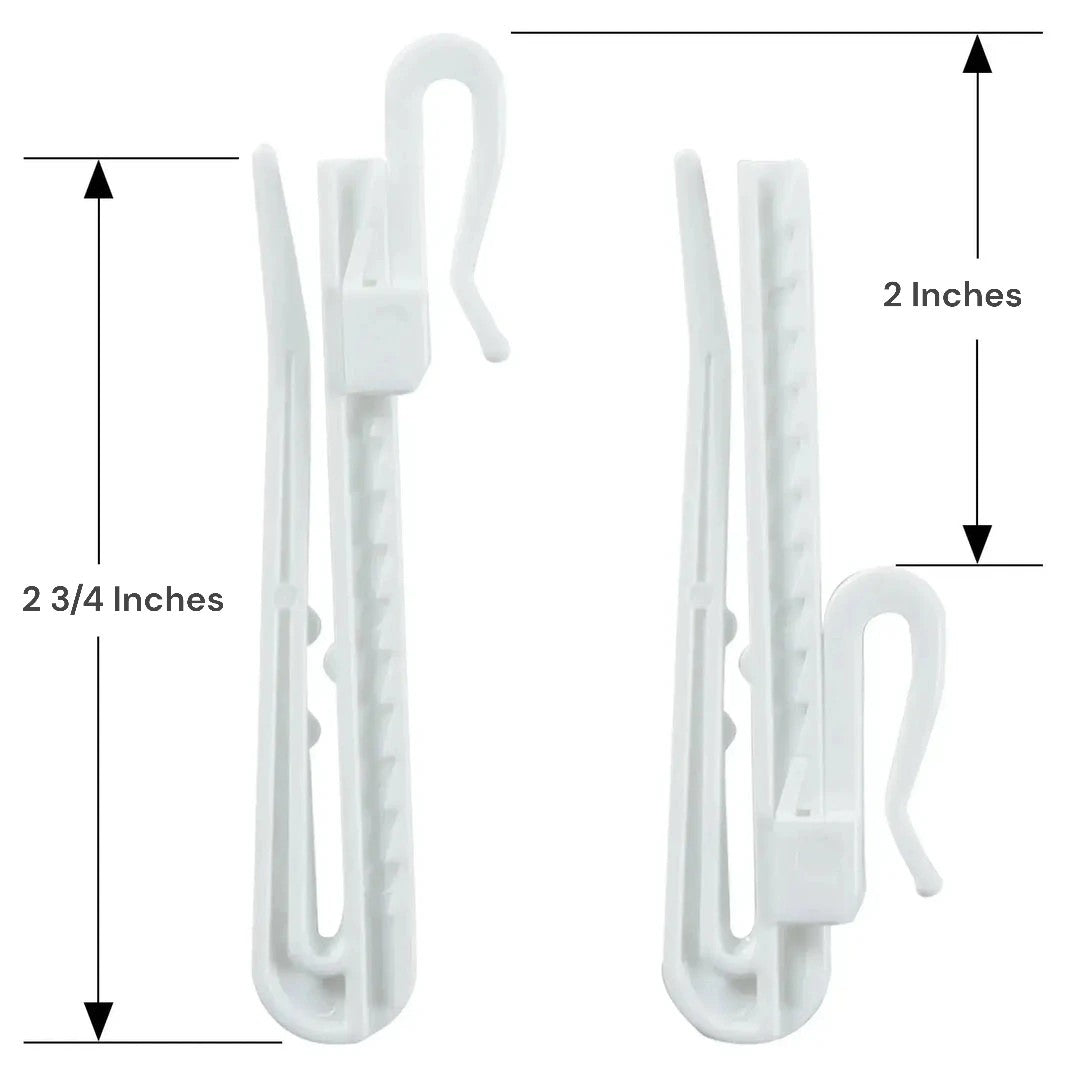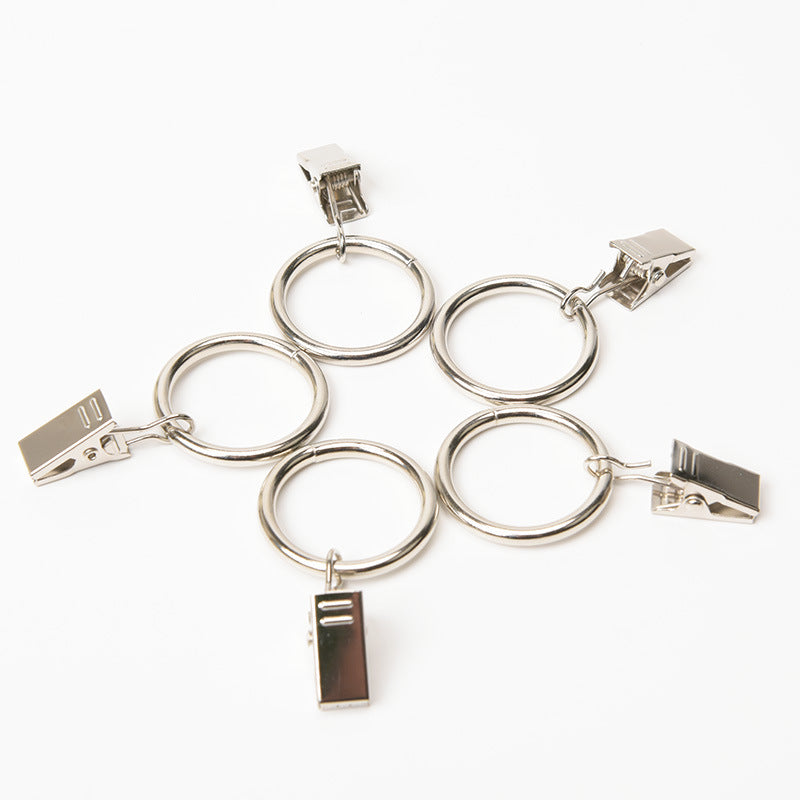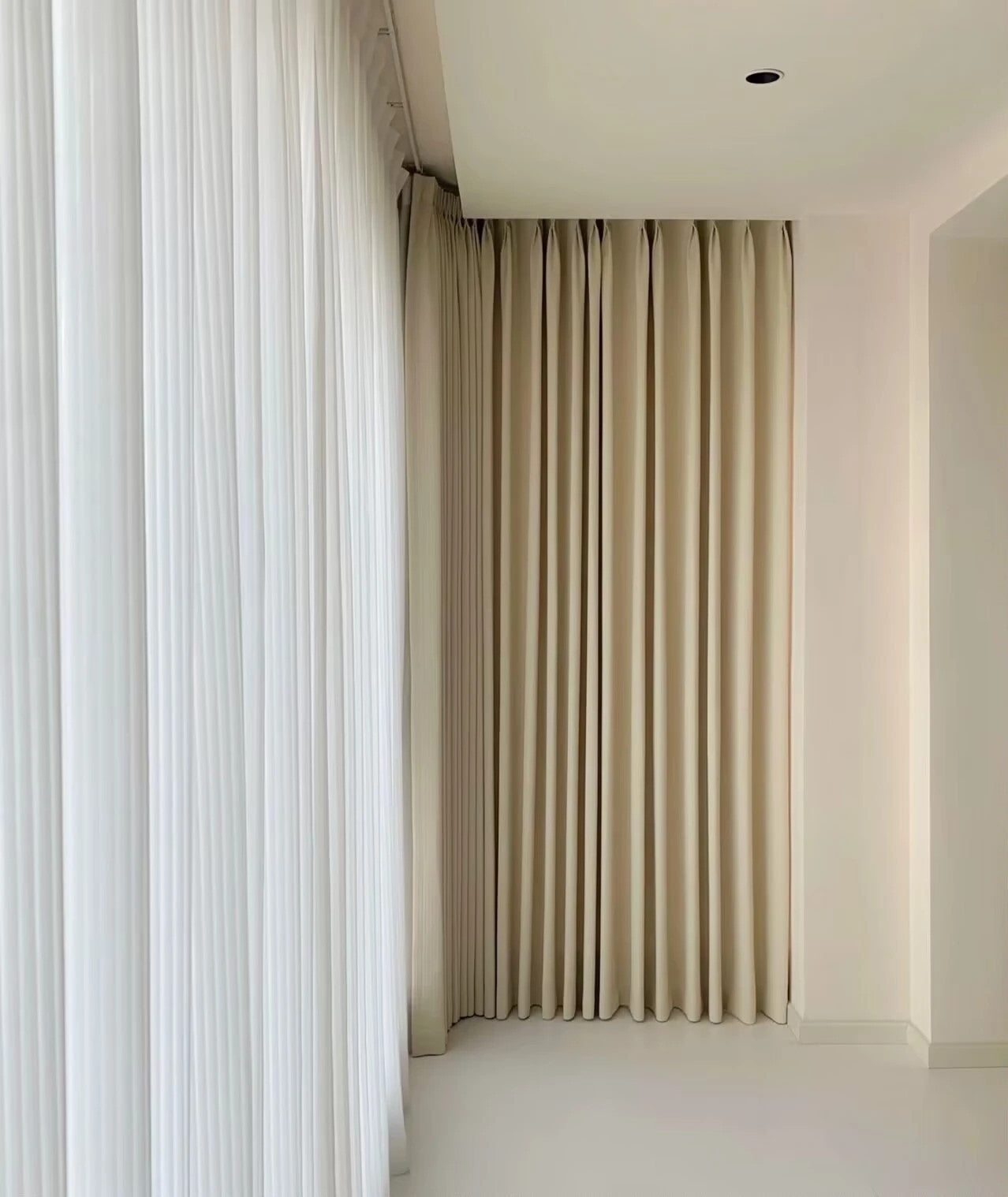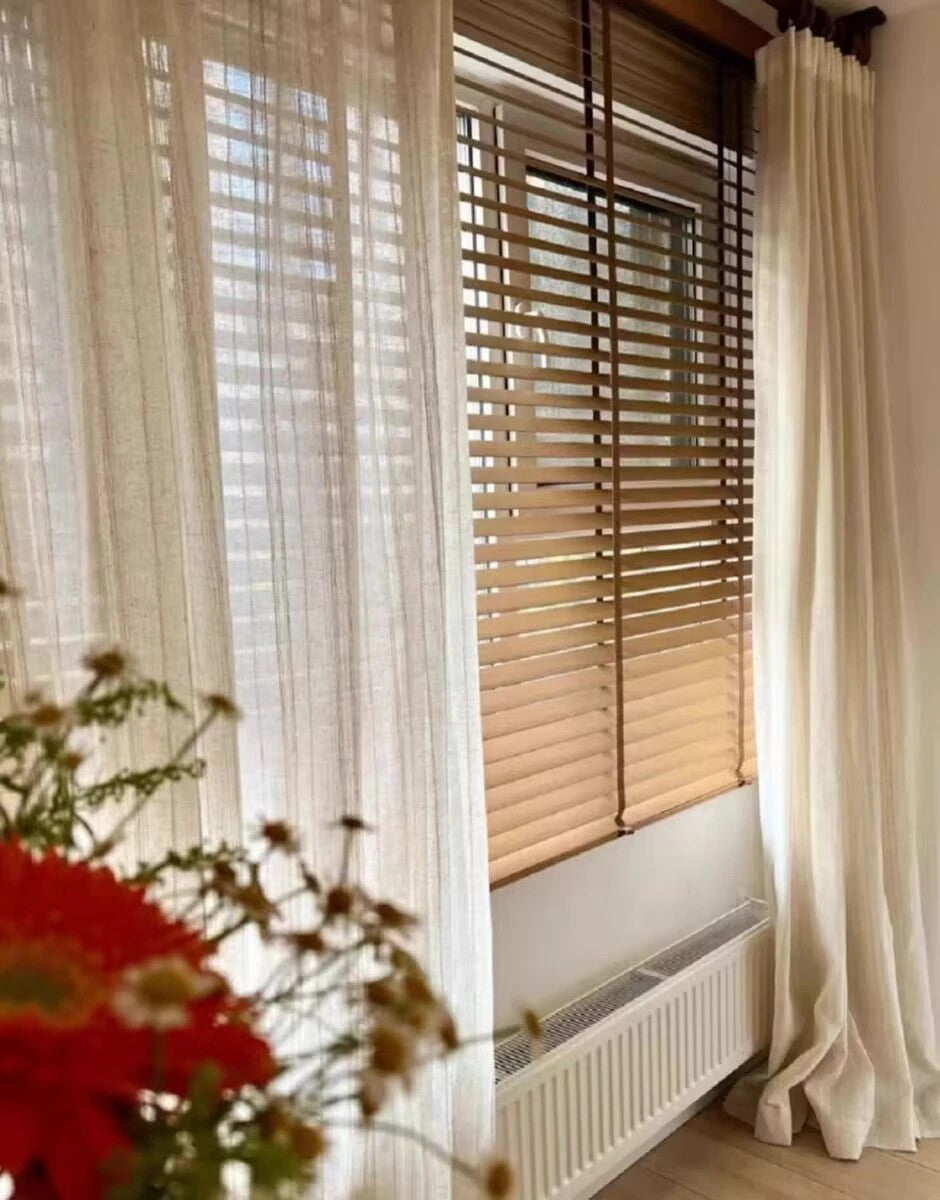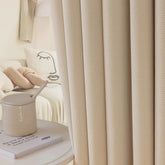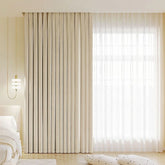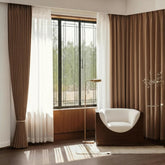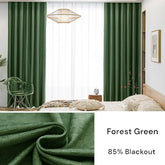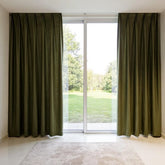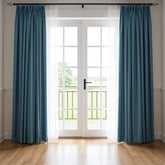Can Curtains Touch Radiator? Find Out Now!
Hey there, I'm James from Dolcewe.com. As a custom curtain expert for over a decade, I've heard this question countless times: Can curtains touch radiators?
It's a common concern, and for good reason. Your home's safety and style are on the line. Today, I'm here to clear the air and share some insider tips that'll keep your space both cozy and chic.
Ready to become a curtain pro? Let's dive in!
Key Takeaways:
| Main Section | Key Takeaway |
|---|---|
| Curtain Safety | Curtains can touch radiators if made of non-flammable materials. Opt for fire-resistant fabrics like wool or polyester for added safety. |
| Radiator Types | Water radiators are safer than electric heaters. If you have electric heaters, consider switching to water radiators for improved safety with curtains. |
| Fabric Selection | Choose thick, tightly woven fabrics like velvet or chenille. These materials not only reduce fire risk but also enhance insulation, potentially lowering your heating costs. |
| Curtain Length | Keep curtains at least 15 cm (6 inches) above radiators. Consider custom-length curtains from Dolcewe.com to ensure the perfect fit for your windows and radiator setup. |
| Alternative Treatments | Pair floor-length curtains with roller shades or wooden blinds. This combination offers both style and safety while maximizing light control and energy efficiency. |
| Safety Measures | Install curtains in frequently used rooms and keep a small fire extinguisher nearby. Regular safety checks can prevent potential hazards and give you peace of mind. |

Can Curtains Touch Radiators?
Yes, curtains can touch radiators, but safety precautions are crucial. Here's what you need to know:
Radiator Types and Safety
| Radiator Type | Safety Level | Precautions |
|---|---|---|
| Water Radiators | Lower risk | Keep curtains 15 cm (6 inches) above |
| Electric Heaters | Higher risk | Avoid direct contact, use heat-resistant fabrics |
If you have electric heaters, consider switching to water radiators for improved safety with curtains.
Fabric Selection for Radiator-Safe Curtains
Choose fire-resistant fabrics to minimize risk:
- Best Options: Wool, polyester, velvet, chenille
- Avoid: Lightweight materials like linen and cotton
Opt for thick, tightly woven fabrics. They not only reduce fire risk but also enhance insulation, potentially lowering your heating costs.
Curtain Length and Placement
- Keep curtains at least 15 cm (6 inches) above radiators
- For small gaps between radiator and window, use shorter curtains
- For larger gaps, floor-length curtains are acceptable
Dolcewe.com Advantage: Our custom-length curtains ensure the perfect fit for your windows and radiator setup.
Alternative Window Treatments
Combine these options for both safety and style:
- Roller shades with floor-length curtains
- Stationary curtain panels with wooden blinds
Insider Tip: A layered approach not only enhances safety but also improves temperature control and adds visual interest to your room.
Additional Safety Measures
- Install curtains in frequently used rooms for quick detection of issues
- Keep a small fire extinguisher nearby
- Conduct regular safety checks on curtains and radiators
Dolcewe.com Recommendation: Schedule bi-annual curtain inspections to ensure ongoing safety and maintain the quality of your window treatments.
Remember, at Dolcewe.com, we're always here to help you find the perfect, safe solution for your window treatment needs.
Understanding Radiator Types and Risks for Curtains
To ensure your home remains both stylish and safe, let's dive into the specifics of radiator types and their interaction with curtains.
Radiator Types and Their Risks
| Radiator Type | Risk Level | Safety Measures |
|---|---|---|
| Water Radiators | Moderate | Use heat-resistant fabrics, maintain 6-inch clearance |
| Electric Radiators | High | Avoid direct contact, use fire-resistant curtains, consider alternative window treatments |
Actionable Safety Tips
- Choose the right fabric: Opt for fire-resistant materials like wool or polyester for curtains near radiators.
- Adjust curtain length: Keep curtains at least 15 cm (6 inches) above radiators. Consider our custom-length curtains at Dolcewe.com for a perfect fit.
- Install heat deflectors: Place these between the radiator and curtains to redirect heat and reduce risk.
- Regular inspections: Check your curtains and radiators monthly for signs of damage or discoloration.
Smart Solutions for Different Scenarios
- Small gap between radiator and window: Use shorter curtains or consider roman shades.
- Electric radiators: Install a combination of blinds and shorter curtains for layered protection.
- Large windows with radiators: Opt for our custom side panels with sheers to balance style and safety.
Pro Tip: Fabric Selection
When selecting curtains for rooms with radiators, prioritize these fabrics:
- Wool (naturally fire-resistant)
- Polyester (melts rather than ignites)
- Treated cotton (with fire-retardant chemicals)
At Dolcewe.com, we offer a range of these safe, stylish options tailored to your specific needs.
Remember, while it's possible for curtains to touch radiators if they're made of non-flammable materials, it's always safer to maintain a gap.

Choosing the Right Fabric for Curtains Near Radiators
When selecting curtains for use near radiators, safety and style should be your top priorities.
Here's a comprehensive guide to help you make the best choice:
Fabric Safety Ratings
| Fabric Type | Safety Rating | Recommendation |
|---|---|---|
| Velvet | Excellent | Highly recommended |
| Wool | Excellent | Highly recommended |
| Chenille | Very Good | Recommended |
| Polyester | Good | Acceptable |
| Cotton | Poor | Avoid |
| Linen | Poor | Avoid |
Key Factors to Consider
- Fabric Thickness: Opt for thicker fabrics as they're less likely to catch fire.
- Weave Tightness: Choose curtains with a tight weave for added safety.
- Fire Retardancy: Look for fabrics labeled as fire-retardant or treated with fire-resistant chemicals.
Actionable Tips for Customers
- Measure Your Windows: Before purchasing, measure your windows and radiator placement to ensure proper curtain length.
- Check Labels: Always read manufacturer labels for fabric composition and safety ratings.
- Consult Experts: If unsure, reach out to our team at Dolcewe.com for personalized advice.
- Consider Layering: Use fire-resistant linings with your favorite curtain fabrics for added protection.
Bonus Tip
Invest in custom-made curtains from Dolcewe.com to ensure the perfect fit and fabric choice for your radiator-adjacent windows.
Our experts can guide you through selecting the safest and most stylish options tailored to your specific needs.
Length Matters: Curtains and Radiator Distance
When it comes to curtains and radiators, length matters more than you might think.
Here's what you need to know to keep your home safe and stylish:
Optimal Curtain Length
| Gap Between Radiator and Window Ledge | Recommended Curtain Length |
|---|---|
| 15 cm (6 inches) or more | Full-length curtains acceptable |
| Less than 15 cm (6 inches) | Shorten curtains to avoid radiator contact |
Action Steps for Safe Curtain Installation:
- Measure the gap between your radiator and window ledge.
- If the gap is less than 15 cm, order custom-length curtains from Dolcewe.com to ensure they stop above the radiator.
- For gaps larger than 15 cm, feel free to choose full-length curtains for a luxurious look.
Pro Tips for Radiator-Friendly Curtains:
- Heat Protection: Opt for heat-resistant fabrics like polyester or wool blends to minimize damage from radiator heat.
- Regular Checks: Inspect your curtains monthly for any signs of heat damage or discoloration.
- Airflow Consideration: Leave a small gap between curtains and the floor to improve air circulation and heating efficiency.
Safety First: Curtain Placement Near Radiators
- Keep curtains at least 15 cm above radiators to prevent fire hazards.
- Use curtain holdbacks or tiebacks to secure curtains away from radiators when open.
- Consider installing a narrow shelf above the radiator to act as a barrier between it and the curtains.
By following these guidelines, you'll not only enhance the safety of your home but also protect your investment in beautiful, custom-made curtains from Dolcewe.com. Remember, the right length isn't just about style – it's about creating a safe and comfortable living space.
Alternative Window Treatments for Radiator Safety
When it comes to ensuring both safety and style near radiators, you have several options beyond traditional curtains.
Here are some practical alternatives and combinations to consider:
| Window Treatment | Benefits | Safety Tips |
|---|---|---|
| Roller Shades + Floor-Length Curtains | - Dual light control - Enhanced insulation - Stylish layered look |
- Choose flame-resistant materials - Install roller shade at least 6 inches above radiator |
| Stationary Curtain Panels | - Decorative without full coverage - Ideal for tight spaces |
- Secure panels away from radiator - Opt for shorter lengths to avoid contact |
| Wooden Blinds | - Classic aesthetic - Precise light control |
- Install with a minimum 4-inch clearance from radiator - Regular dusting to prevent heat buildup |
Actionable Tips for Radiator-Safe Window Treatments:
-
Measure carefully: Before purchasing, measure the distance between your window and radiator to ensure proper clearance.
-
Choose fire-resistant fabrics: For any fabric treatments, select materials rated for fire resistance, such as polyester or wool blends.
-
Layer strategically: When combining treatments (e.g., shades and curtains), install the shade closer to the window and curtains further out for better heat management.
-
Opt for custom solutions: Consider Dolcewe.com's custom curtain service to get the perfect size and material for your specific radiator setup.
-
Regular maintenance: Regardless of your choice, schedule regular cleaning and inspection to ensure continued safety and efficiency.
Safety Precautions for Curtains Near Radiators
To ensure the safety of your home and family when using curtains near radiators, follow these actionable tips:
-
Strategic Placement
- Hang curtains in frequently used rooms for immediate detection of issues
- Keep curtains at least 15 cm (6 inches) above radiators
-
Fire Safety Measures
- Install a small, effective fire extinguisher nearby
- Choose a Class A fire extinguisher, suitable for fabric fires
- Place the extinguisher within easy reach, but away from potential fire sources
-
Regular Maintenance
- Conduct monthly inspections of curtains near radiators
- Check for:
- Discoloration
- Weakened fabric
- Fraying edges
- Replace curtains immediately if any damage is detected
-
Family Education
- Teach all household members about radiator and curtain safety
- Establish a "no-touch" rule for curtains near radiators
- Conduct a family fire drill every six months
-
Smart Fabric Choices
- Opt for fire-resistant materials like:
- Wool
- Polyester
- Nylon
- Avoid highly flammable fabrics such as:
- Cotton
- Linen
- Acrylic
- Opt for fire-resistant materials like:
| Radiator Type | Recommended Curtain Material | Minimum Safe Distance |
|---|---|---|
| Water Radiator | Wool or Polyester | 15 cm (6 inches) |
| Electric Heater | Fire-resistant Synthetic Blend | 30 cm (12 inches) |
Remember, safety doesn't mean sacrificing aesthetics – we offer a wide range of fire-resistant, custom-sized curtains to suit your needs.
Additional Safety Tips for Curtains and Radiators
It is essential to follow radiator safety guidelines when using curtains near radiators. In addition to the tips discussed above, here are some additional precautions to consider:
- Keep combustible items like clothes, bedding, and papers away from radiators.
- Avoid using space heaters near curtains or other flammable materials.
- Regularly clean radiators to ensure they are functioning correctly and not overheating.
- Never leave curtains or other flammable items unattended near a radiator.
By taking these additional measures, you can avoid fire hazards and ensure that your home remains safe and comfortable.
Maintaining Energy Efficiency with Curtains and Radiators
Best Curtain Materials for Heat Retention
| Material | Benefits | Energy Efficiency Rating |
|---|---|---|
| Velvet | Thick, luxurious, excellent insulator | ★★★★★ |
| Wool | Natural insulator, durable | ★★★★☆ |
| Brocade | Dense weave, decorative | ★★★★☆ |
| Thermal Curtains | Specially designed to block drafts | ★★★★★ |
Actionable Tips for Energy-Efficient Curtain Installation
-
Use double-layer curtains:
- Inner layer: Sheer or lightweight fabric for light filtration
- Outer layer: Heavy fabric for insulation
-
Proper sizing:
- Ensure curtains extend beyond window frame by at least 4 inches on each side
- Install curtain rods 4-6 inches above window frame to minimize drafts
-
Strategic opening and closing:
- Open curtains during sunny days to let in natural heat
- Close curtains at night to trap heat inside
Direct Energy-Saving Suggestions
-
Install curtain tracks: Use ceiling-mounted tracks to create a seal between curtains and walls, reducing heat loss by up to 25%.
-
Invest in interlined curtains: These have an extra layer of insulating material, boosting energy efficiency by up to 30%.
-
Consider motorized curtains: Automate your curtains to open and close at optimal times for maximum energy savings.
By implementing these specific curtain strategies, you can reduce your energy bills by up to 15% annually while maintaining a comfortable home temperature.
Remember, at Dolcewe.com, we offer custom-sized curtains starting from $26.99, tailored to fit your windows perfectly for optimal energy efficiency.
FAQ
Q: Can curtains touch radiators?
A: Yes, as long as the curtains are not made of flammable materials.
Q: What are the risks of placing curtains near radiators?
A: The heat emitted by the radiator can pose a fire risk, especially with certain types of curtains.
Q: What are the different types of radiators?
A: There are water radiators and electric heaters.
Q: Are water radiators safer for curtains than electric heaters?
A: Water radiators do not reach high temperatures like electric ones do, but caution should still be exercised.
Q: What type of fabric should I choose for curtains near radiators?
A: Light and flimsy materials like linen and cotton are highly flammable and should not be used. Thicker fabrics are less likely to catch fire.
Q: How should I consider the length of curtains when placing them near radiators?
A: Full-length curtains can increase the fire risk when placed directly above or over a radiator. Curtains should be shortened if the gap between the radiator and window ledge is small or nonexistent.
Q: Are there alternative window treatments I can use with curtains near radiators?
A: Yes, roller shades can be paired with floor-length curtains, and stationary curtain panels can be paired with wooden blinds.
Q: Any safety tips for using curtains near radiators?
A: Hang the curtains in frequently used rooms and have a small fire extinguisher readily available.
Q: Are there any additional safety tips for curtains and radiators?
A: Follow radiator safety guidelines and take precautions to avoid fire hazards.
Q: Can curtains and radiators be used together to maintain energy efficiency?
A: Yes, by choosing the right curtains and using them strategically, you can maintain energy efficiency in your home.



